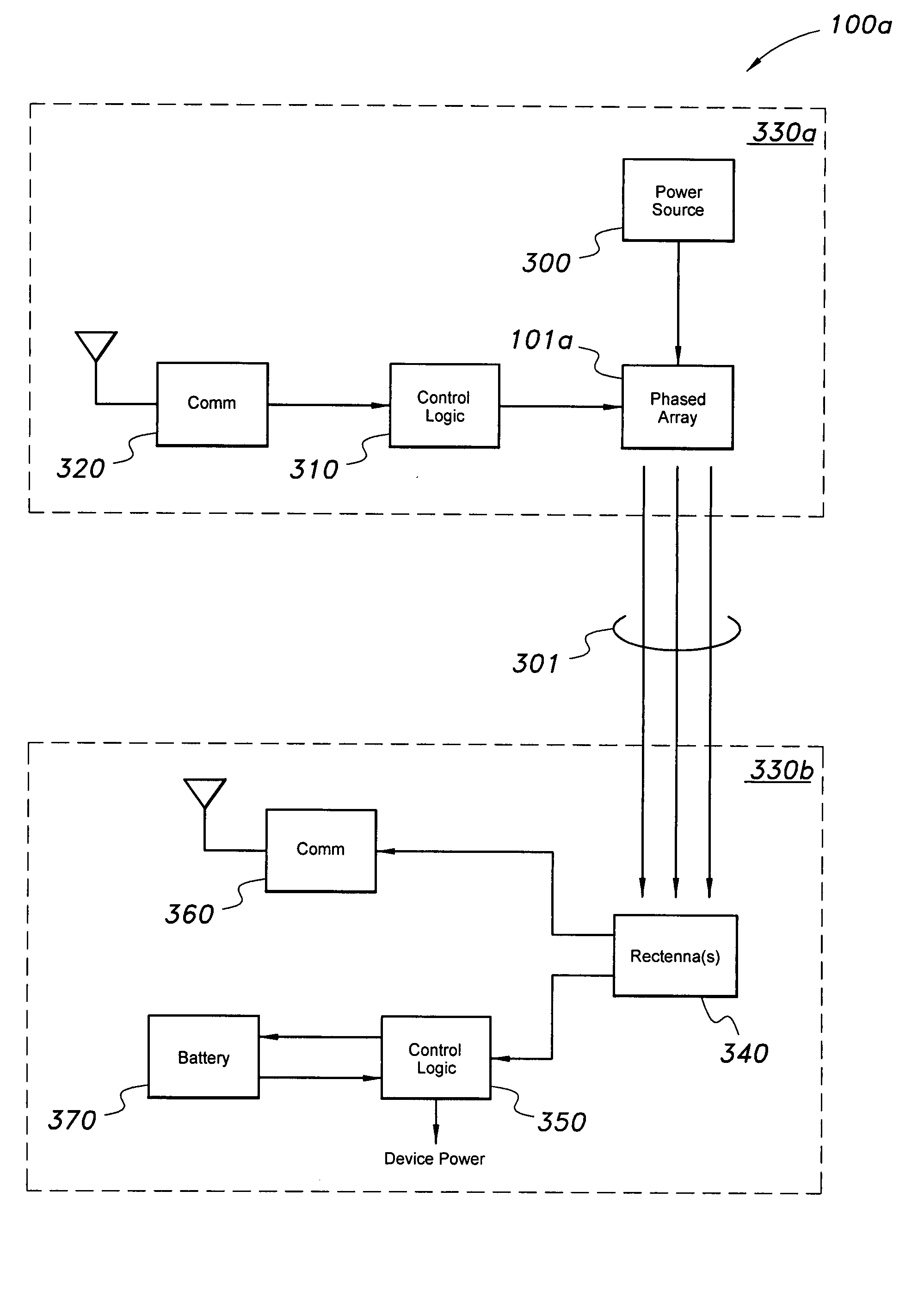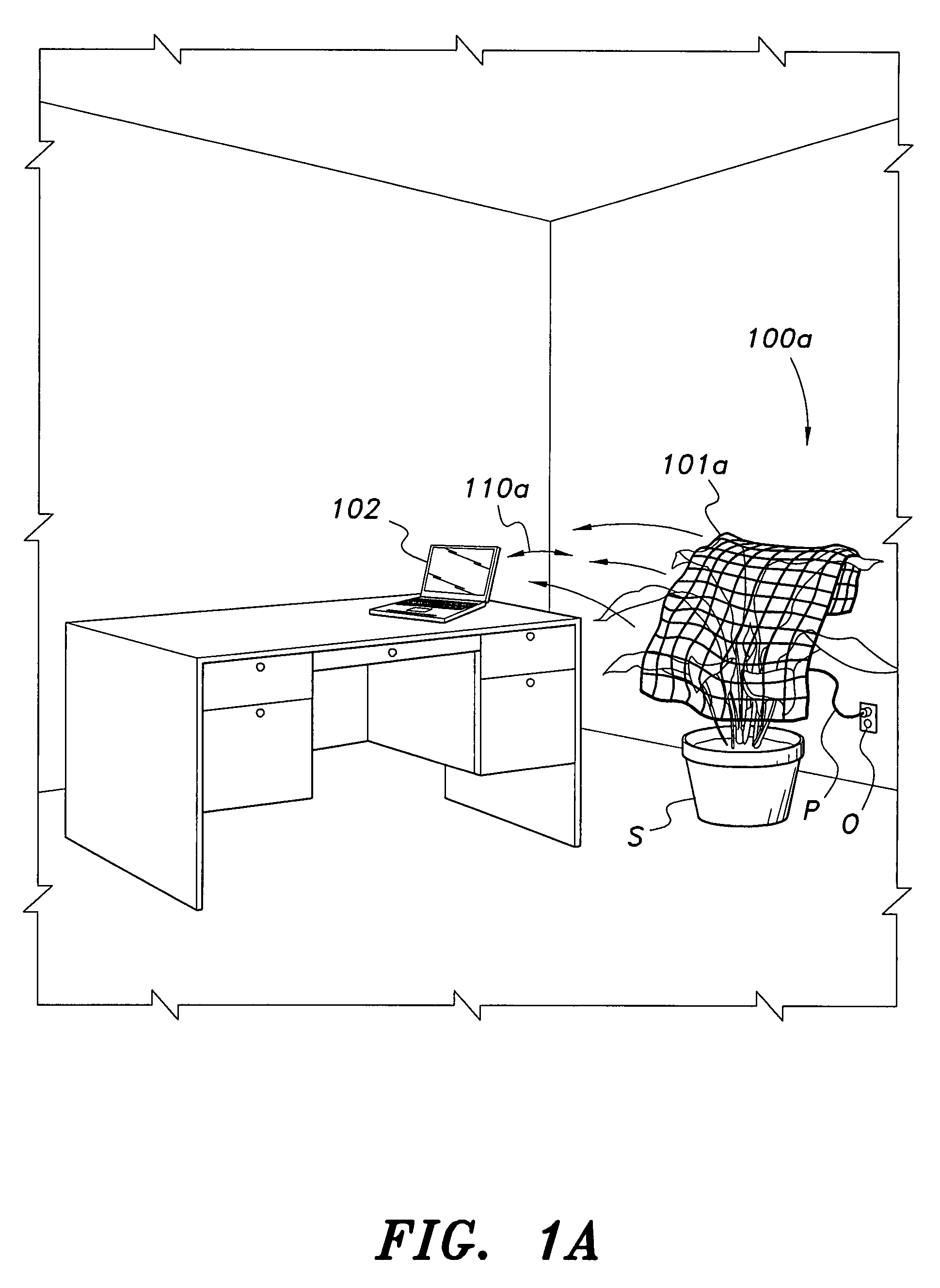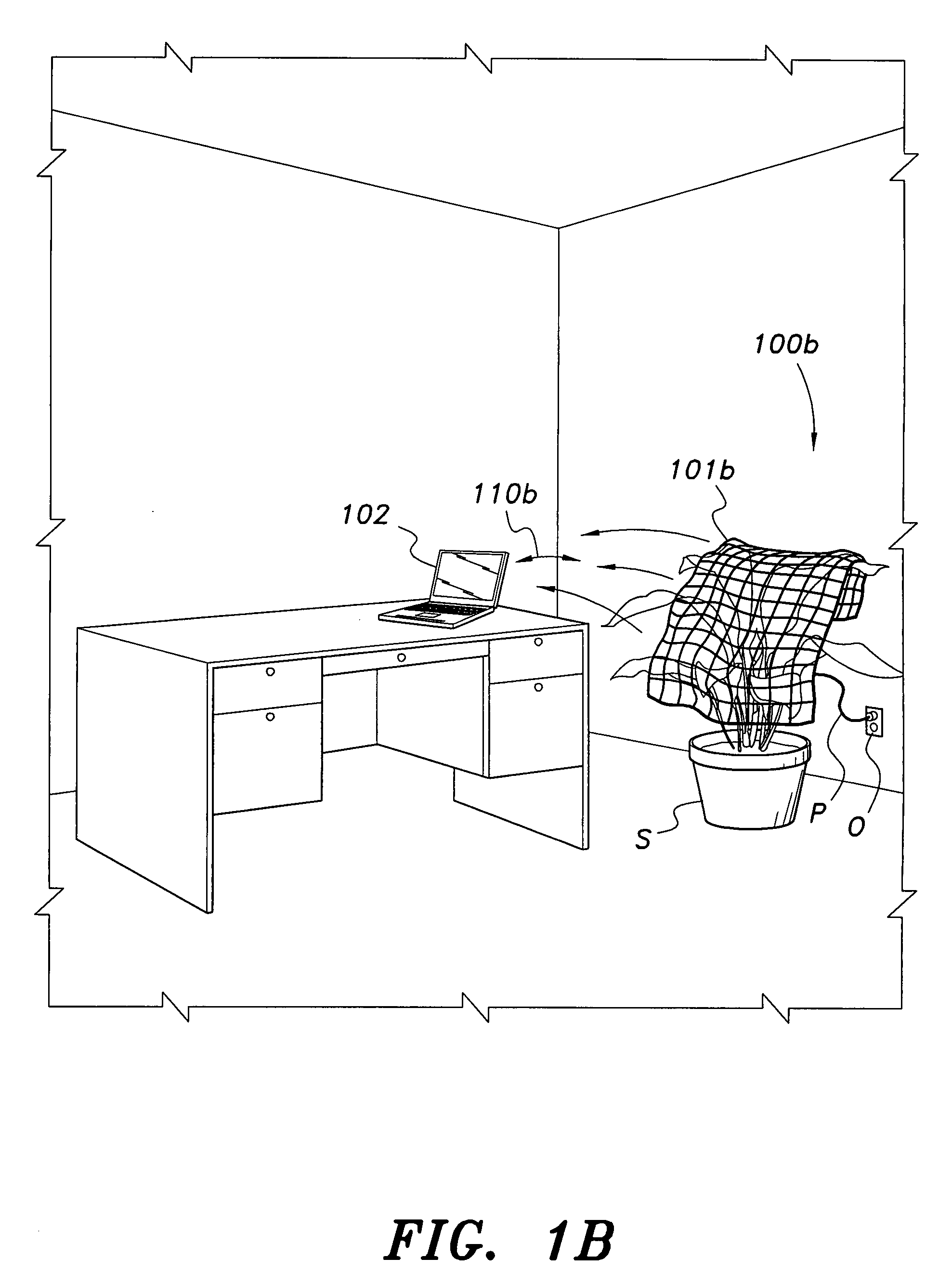Wireless power transmission system
- Summary
- Abstract
- Description
- Claims
- Application Information
AI Technical Summary
Benefits of technology
Problems solved by technology
Method used
Image
Examples
first embodiment
[0024]As shown in FIGS. 1A-3B, the microwave energy is focused onto a device to be charged by a power source 300 connected to one or more adaptively-phased microwave array emitters 204, i.e., antennae or radiators. According to the present invention, the microwave energy from the adaptively-phased microwave array emitters 204 may be focused onto the device without the need to know the location of the device. As shown in FIGS. 1A, 1B, and 3A-3B, preferably highly efficient rectennas 340 (a rectenna is a rectifying antenna that converts microwave energy directly into d.c. electricity; such devices are known in the art and will not be described further herein) within the device to be charged 102 receive and rectify the microwave energy and use it for charging battery 370 via charging and / or for primary power to the device 102 as determined by control logic 350. In a first embodiment, a communications channel is opened between the wireless power source 100a and power receiver 330b in th...
second embodiment
[0029]In a second embodiment, as most clearly shown in FIGS. 2B and 3B, each array element or node 204 can be set to receive a calibration signal from a calibration transmitter 460 in the power receiving system 330b. Each array element or node 204 can send the received calibration signal detected at that node 204 to the control logic 310 via data line 303. Subsequently, either controller 310, controller 206, or both controllers in combination may set each array element or node 204 to the detected phase for that element as a transmitting phase in order to send an optimized power beam 301 back to the power receiver 330b. In both embodiments 100a and 100b, a configuration memory device may be in operable communication with the controller logic 310 in order to enable the array to transmit power to a specific location or “hotspot” without first having to communicate to the device to be charged 102. This feature is useful in sending power beam 301 to the device to be charged 102 when the ...
PUM
 Login to View More
Login to View More Abstract
Description
Claims
Application Information
 Login to View More
Login to View More - R&D
- Intellectual Property
- Life Sciences
- Materials
- Tech Scout
- Unparalleled Data Quality
- Higher Quality Content
- 60% Fewer Hallucinations
Browse by: Latest US Patents, China's latest patents, Technical Efficacy Thesaurus, Application Domain, Technology Topic, Popular Technical Reports.
© 2025 PatSnap. All rights reserved.Legal|Privacy policy|Modern Slavery Act Transparency Statement|Sitemap|About US| Contact US: help@patsnap.com



